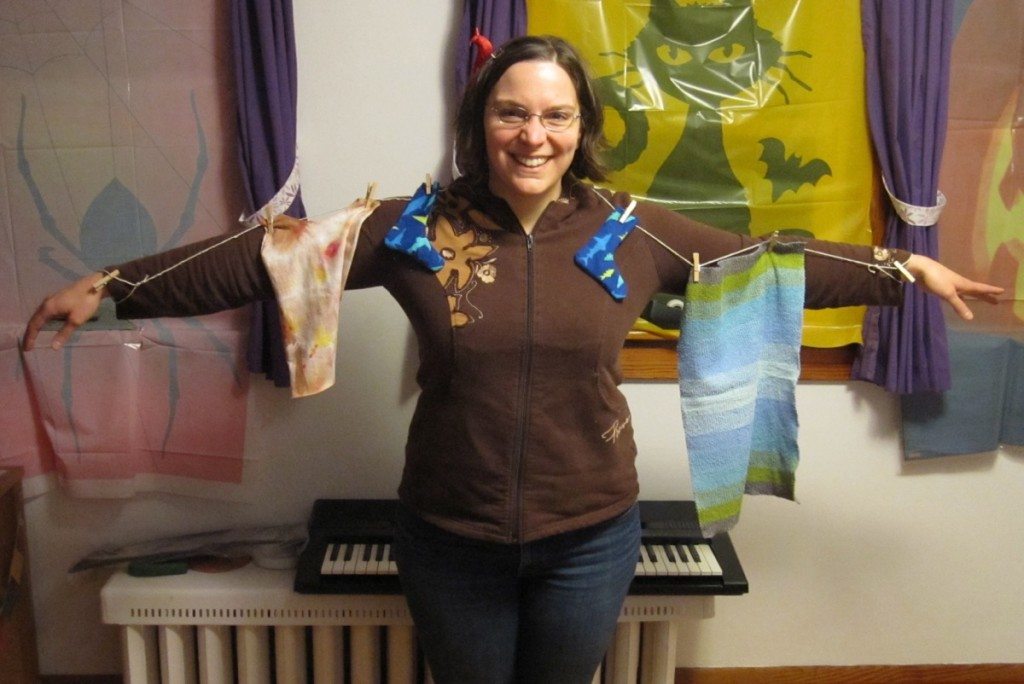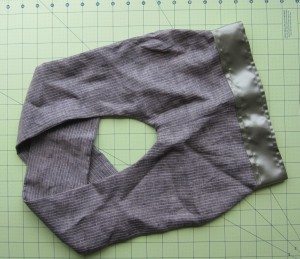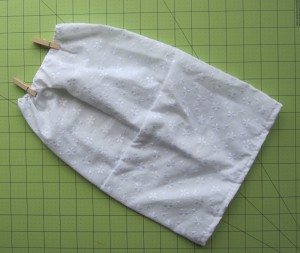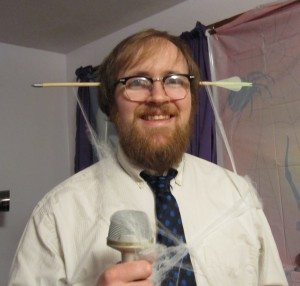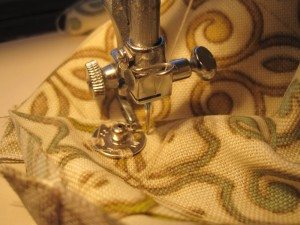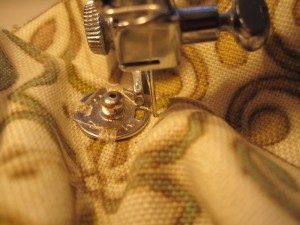So, you know how I said the sewing for my costume was no more than 90 minutes? Well, I made up for that with costumes for Stumpy and Cirrus (formerly known as Anonymous Light Blue Monster). Ta da!
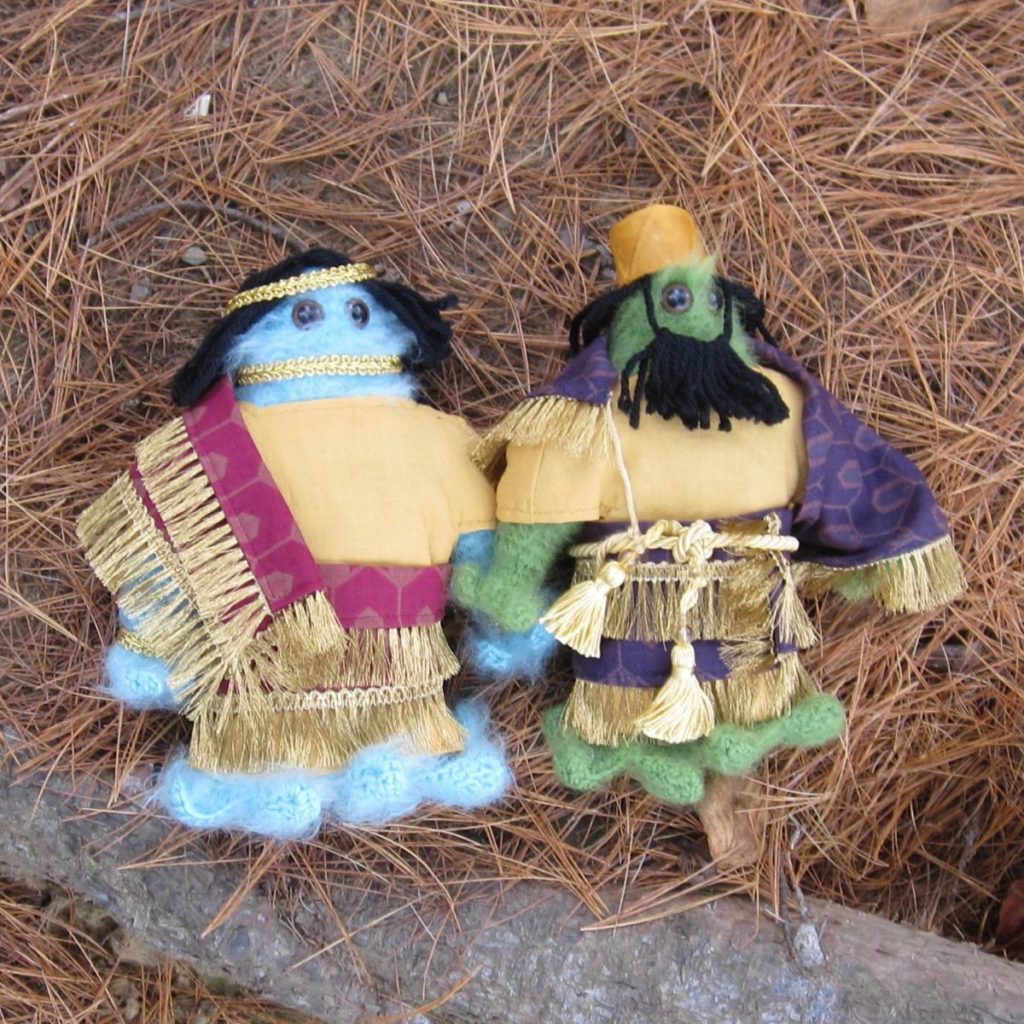
They were Ashur and Ishtar, important ancient Assyrian deities. Something I read said they were husband and wife, but I never found that piece of trivia again so I suspect it was suspect.
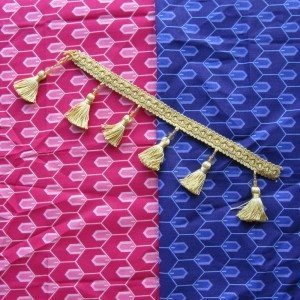
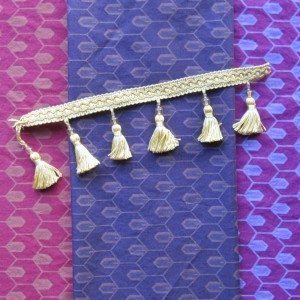
I got advice from my friend Eleanore (“Fringe. Lots of fringe.”) and a page on Assyrian costumes. Getting an appropriate geometric pattern with (relatively) accurate colors required dyeing fabric (before and after shown above, though unfortunately not in the same lighting – that’s the same fringed trim in each shot). I scaled the shawl measurements in the Fashion Era link by 1/9, cut them from muslin, and then adjusted the proportions, since after all monsters are not humans.
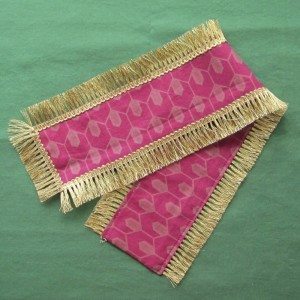
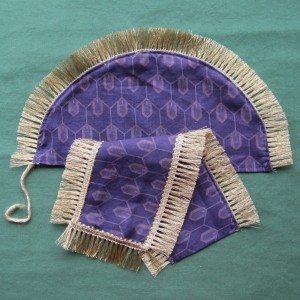
Fortunately, monsters are fairly patient and easy-going, because we had some long fitting sessions. The tunics I had to design from scratch and they are far from historically accurate, but I had to adjust for the fact that humans are proportionally smaller front to back and also have necks that are quite a bit smaller front to back than their chests. The tunics have a front and back panel (really two in the back), with insets along the shoulders and down the sides under the arms. I was glad I made a muslin first because it was a wee bit snug.
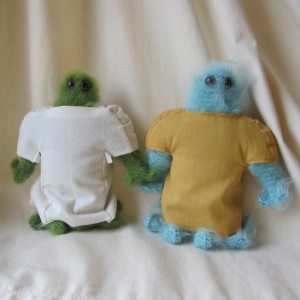
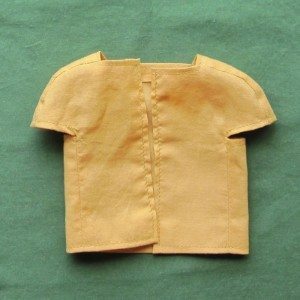
And let’s not forget their accessories! This is unlikely to be the last time you see them in wigs.
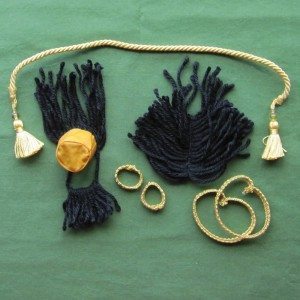
The picture up top was taken during a long outing by the river. When they got home and out of costume they needed a good brushing, both for fluffiness and for removal of bits of the great outdoors. More photos will shortly be posted on Stumpy’s Facebook page.
